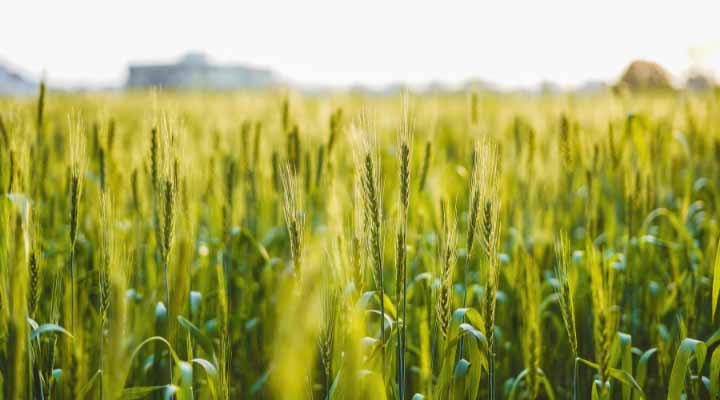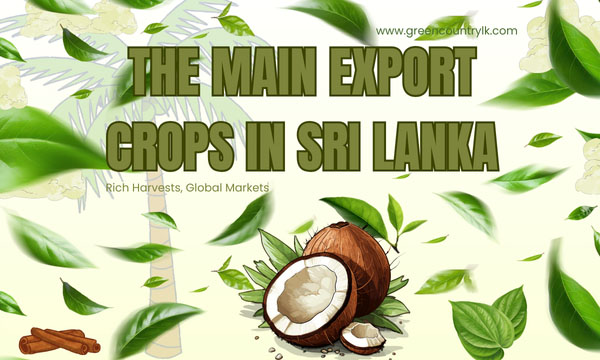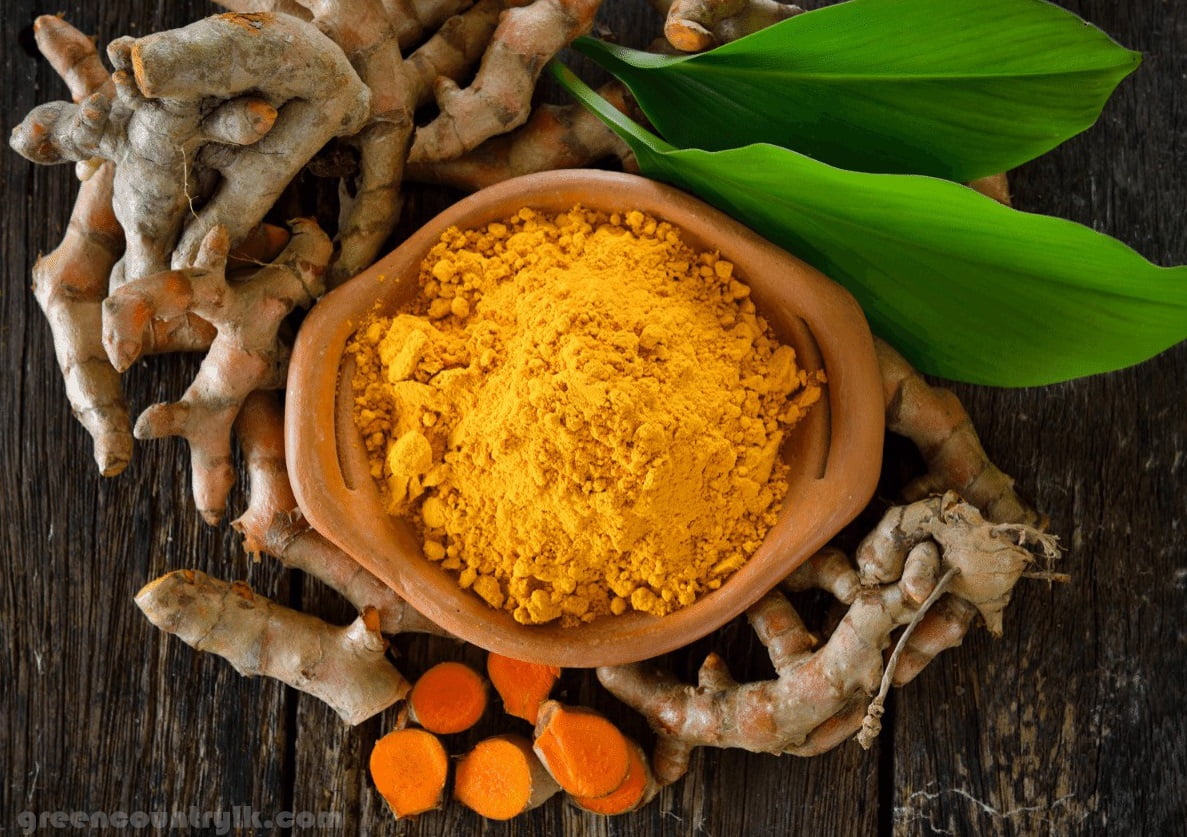Among the crops cultivated by humans since time immemorial, wheat is the most prominent. Wheat cultivation has played a major role in global agricultural nutrition for centuries. Wheat cultivation started about 10,000 years ago. History says that wheat cultivation started in the Fertile Crescent, a region in the Middle East consisting of modern Iraq, Syria,
Among the crops cultivated by humans since time immemorial, wheat is the most prominent. Wheat cultivation has played a major role in global agricultural nutrition for centuries.
Wheat cultivation started about 10,000 years ago. History says that wheat cultivation started in the Fertile Crescent, a region in the Middle East consisting of modern Iraq, Syria, Israel, Lebanon, and Jordan. From there, wheat cultivation spread from the Middle East to Europe, Asia, and eventually the Americas. The Roman Empire played a major role in popularizing wheat cultivation throughout Europe and wheat was recognized as staple food in Europe during that period. By the Middle Ages, wheat was recognized as a symbol of prosperity, and it is still associated with the most famous food, bread.
Wheat is known as one of the crops introduced to the Americas by the European settlers, and at that time it was a great help to the agricultural development of the Americas, and information has been revealed that it has grown in the fertile soil of North America as well as South America.
Wheat varieties
Currently, wheat cultivation is done in many countries around the world, and each country decides which type of wheat should be cultivated according to its soil quality. That is, there are several types of wheat that can be grown to suit each climate. Here, there are two basic varieties of wheat used for cultivation by countries, which can be described as common wheat and durum wheat respectively.
- 01. Common wheat
- 02. Durum wheat
01. Common wheat (Triticum aestivum)
This is the most widely used type of wheat throughout the world. This is commonly known as bread wheat. Common wheat is widely cultivated for the grains that are used as staple foods in many cultures and countries.
This type of wheat belongs to the poaceae family. Furthermore, this is a hexaploid species which consists of six sets of chromosomes. For the same reason, it contributes enormously to genetic diversity and adaptation. This genetic complexity of wheat has allowed the development of different varieties with specific traits such as disease resistance, drought tolerance and high-yield potential.
This common type of wheat is very versatile and can be grown in soils of different climatic zones. As such, it has become a staple crop in temperate and subtropical regions. Moreover, this type of wheat is rich in carbohydrates, which provide a significant source of energy. Additionally, this wheat contains various vitamins, proteins, and minerals.
This type of wheat is primarily used for the production of flour, which is used to prepare baked foods including bread. Common wheat or bread wheat is used in some countries to prepare cereal pasta, as well as to prepare various cereals and drinks.
02. Durum Wheat (Triticum Durum)
Generally, this type of wheat is known for its firm texture and high-protein content and is mainly grown in areas with hot and dry climates.
Triticum Durum is a tetraploid species and this type of wheat contains only four sets of chromosomes. This genetic makeup contributes to their unique properties. They are also used as an important crop in cuisines, especially in the Mediterranean and Middle Eastern regions.
These are high density compared to other wheat varieties, which is one of the main characteristics of this species. According to experts, these are best suited for making semolina flour. These are packed with essential nutrients like dietary fiber, iron, and vitamin B and have a higher protein content than regular wheat.
This type of wheat is used to make certain types of bread such as pasta, couscous and flat bread.
Cultivation of wheat
Cultivation of wheat is done in most of the countries of the world, and a significant part of the world’s population uses wheat as staple food. Wheat is most commonly grown in temperate, well-drained regions with moderate rainfall. The process of wheat cultivation depends on selection of suitable wheat variety, soil preparation, management of water and other essential nutrients and protection of the crop from pests.
Basic Steps of Wheat Cultivation:
Step 01
Choosing the right type of wheat:
Firstly, you need to choose a type of wheat that is suitable for the climate and soil conditions of the area where you live. Generally common wheat is used to prepare baked foods like bread and durum wheat is used to prepare pasta etc. So decide the type of wheat that suits you.
Step 02
Soil preparation:
Before preparing the soil, you should conduct a soil test to determine the soil’s pH and nutrient levels. (Remember that wheat has a pH between 6.0 and 7.5) After that test, dig the soil 6–8 inches deep to plant the wheat. If the soil does not have the proper pH value, add lime to adjust the pH value and organic matter or fertilizer used to fertilize the soil. (Based on soil test)
Step 03
Sowing the seeds:
When seeding is done, seeding for winter wheat should be started in late fall and if spring wheat is grown, seeding should be started in early spring. For sowing seeds, the pits should be cut 1-1.5 inches deep and the distance between the rows should be 6–8 inches.
Step 04
Water management:
In particular, one of the most important things that a wheat farmer should know is how we water our crops. You need to ensure that the seeds are uniformly moist after planting during the germination and root growth stages. When watering wheat, you should usually water it well for the growing season. You can use drip or sprinkler irrigation systems for watering if you are doing this cultivation on a large scale.
Step 05
Fertilizer:
Here, the first thing you should do is to add potassium and phosphorus to the soil prepared for planting the seeds before planting the seeds based on the soil test done first. Furthermore, in addition to this, nitrogen should be added to the soil and nitrogen should be added once more during the seed growing season.
Step 06
Management of weeds, pests, and diseases:
After the seeds are planted, it is very common for weeds to grow around them. So in wheat cultivation, before we suppress the weeds, we should use the weeds emerging around them and plant them between the seeded rows. Moreover, to protect the wheat crop from common pests like aphids that damage the wheat plants, we need to adopt a suitable type of insecticide or biological method. Furthermore, we can plant resistant plant varieties to protect crops from diseases such as rust and powdery mildew, which are common in wheat cultivation. Additionally, when necessary, the application of fungicides must be done.
Step 07
Harvesting:
Hardening of the grain and turning of the sprouts to a golden color indicates that the wheat harvest is ready. Using the advanced technology available today, you can use a combine harvester to cut and thresh wheat. Small-scale cultivation does not require the use of machinery and you can use a scythe.
Step 08
Postharvest handling:
After harvesting the wheat, it is common to prevent them from developing mold. To prevent the growth of mold, wheat should be harvested with a moisture content of 12-14%. Dry wheat should be stored in airtight containers in a cool, dry place. This is done to protect dry wheat from pests and moisture.
Restoring Heritage Grains Ebook
Top Countries Leading in Wheat Cultivation
Wheat is grown on every continent except Antarctica, and the global production of wheat exceeds 750 metric tons annually.
The following countries are engaged in wheat cultivation globally due to the availability of suitable weather and adequate infrastructure for wheat cultivation.
- China
- India
- Russia
- United States
- France
- Canada
- Pakistan
- Germany
- Australia
- Ukraine
Among them, the countries that currently import and export the most wheat can be listed as follows.
Top three wheat exporting countries and their percentage as a whole:
First place: Russia
Russia is the world’s largest exporter of wheat flour. The total amount of wheat they export is about 20-24%.
Second place: United States
The United States is also a major wheat exporter in the world. The percentage of wheat they export is about 14-17%.
Third place: Canada
Canada is the next largest exporter of wheat in the world, with a percentage of 12-15%.
Top three wheat importing countries and their percentage as a whole:
First place: Egypt
Egypt is the largest importer of wheat in the world. Their wheat import is about 8-10% as a percentage.
Second place: Indonesia
Indonesia imports about 6-8% of the world’s wheat and is the second-largest importer of wheat.
Third place: Turkey
Turkey is the third-largest importer of wheat in the world. As a percentage, it is about 4-6%.
Possible diseases of wheat cultivation and their solutions
01. Wheat Rust
This disease is transmitted to wheat plants by fungi. This disease is transmitted in several ways, stem rust, stripe rust and leaf rust. Stem rust is caused by puccinia gramins, stripe rust is caused by puccinia striiformis and leaf rust is caused by puccinia triticina. To know that the disease is infected, the symptoms seen in wheat plants are rust-colored spots on the stems, leaves, and pods. (yellow and orange stripes are seen for stripe rust)
Treatments:
- Planting of resistant varieties or varieties of wheat resistant to rust.
- Use of fungicides like Trizol, Stobilurin. (This fungicide should be applied at the first sign of infection)
- Crop rotation to break the disease cycle.
02. Angular
Another disease that infects wheat quickly is Blumeria graminis f. sp. tritici is caused by the fungus. The symptoms are white, powdery fungus growth on the leaves and stems. Furthermore, premature death of leaves of plants is another symptom of this disease.
Treatments:
- Cultivation of Anthrax Resistant Crops.
- Use fungicides such as Trizol and Stobilurin.
- Ensure adequate spacing between plants to improve air circulation.
03. Fusarium Tlead Blight (FHB)
This disease is also transmitted to wheat plants due to fungi. This is caused by the fungus Fusarium graminearum. In this disease, we can see red or pink fungus growing on the pods. That is, you can see how the pods have turned discolored.
Treatments:
- Cultivate wheat resistant to FHB disease.
- Application of fungicides at the time of flowering.
- Avoid planting wheat after planting corn, as corn residue can harbor fungi.
04. Septoria Leaf Blotch
It is caused by the fungus Zymoseptoria tritici. Symptoms of this disease include yellow spots on the leaves, which gradually turn brown. In the most severe cases of this disease, death of immature wheat leaves occurs.
Treatments:
- Cultivate Septoria resistant wheat varieties
- Use fungicides containing triazole and stobiliurin.
- Crop rotation to reduce disease burden.
- Manage crop residues.
05. Take-All
It is caused by the fungus Gaeumannomycs Graminis Var tritici. Wilting and premature death of wheat plants is the main symptom and white spots can also be seen on the leaves of the plant.
Treatments:
- Use of crops with low susceptibility to this disease.
- Carrying out crop rotation, with non-host crops such as legumes or oilseeds.
- Maintain a balanced PH and proper drainage.
06. Loose Smut
It is caused by the fungus Ustilago tritici. The main symptom of this disease is the appearance of black powdery spores instead of the normal kernels on the head of the wheat grain.
Treatments:
- Before planting seeds, treat with fungicides.
- Plant blight resistant varieties.
- Plant disease-free or certified seeds.
07. Barley Yellow Dwarf Virus (BYDV)
This disease is transmitted to wheat due to virus. The disease is transmitted by lice. The main symptoms of this disease are yellowing and stunted leaves of wheat plants.
Treatments:
- Plant varieties resistant to this disease.
- Control lice populations using insecticides and natural predators.
- Adjust planting times to avoid peak aphid activity.
Resistant cultivars that can be used in wheat cultivation
01. Wheat Rust
Trunk rust
-
-
- Robigus
- Cadenza
- Kernza
-
Leaf rust
-
-
- Patwin 515
- Bill Brown
- Brawl CL Plus
-
Stripe rust
-
-
- Lilian
- KWS Santiago
- Gallagher
-
02. Angular
-
-
- Claire
- Solstice
- Apache
-
03. Fusarium Head Blight (FHB)
-
-
- Julius
- Tom
- Barlow
-
04. Septoria Leaf Blotch
-
-
- Graham
- KWS Lili
- Elixer
-
05. Take-All
-
-
- Hereward
- Cougar
- Warrior
-
06. Loose Smut
-
-
- Zebra
- SY Ovation
- Chill ham
-
07. Barley Yellow Dwarf Virus (BYDV)
-
-
- SY Mounment
- KWS Lumos
- Ambition
-
By using resistant wheat varieties, you can protect your wheat crop from diseases. And those diseases can be effectively managed. So, try using these crops to ensure a bountiful harvest.
Nutrients in wheat
Wheat is one of the most widely consumed staple foods in the world. Wheat is very beneficial for humans, and an overview of the main nutrients it contains is as follows.
01. Carbohydrates
- Wheat contains approximately 70-75% carbohydrates.
02. proteins
- Wheat contains only 12-15% protein.
03. Fiber
- About 10-15% of grains are fiber.
In addition to these main nutrients, wheat also contains essential nutrients such as vitamins, minerals, antioxidants, fat, and calories. (Wheat contains approximately 340–360 calories per 100g of whole wheat.
The benefits we get from the nutrients contained in wheat
01. Carbohydrates
Due to the complex carbohydrate structure contained in wheat, it gives our body sustained energy. It is slowly digested and absorbed by our body, helping to maintain a stable blood sugar level in our body and supporting physical and mental functions.
02. Proteins
The protein contained in wheat is important for building and repairing tissues in our body, and for producing enzymes and hormones. Furthermore, proteins contained in wheat are essential for maintaining muscle mass.
03. Fiber
Prevents constipation and promotes healthy digestion. Fiber helps regulate our blood sugar levels as it slows down the absorption of glucose and also helps lower cholesterol levels. It also reduces the risk of heart disease.
04. Vitamins
Vitamin B
Supports energy metabolism and nerve function and prevents nerve damage.
Riboflavin
Contributes to energy production and healthy skin. It also reduces the impairment of eyesight.
Niacin
Helps reduce cholesterol levels and balances digestion. Moreover, improves skin health and improves nerve function.
Folate
This vitamin is critical for DNA synthesis and repair. It is also essential during pregnancy to prevent neural tube defects in babies.
Vitamin E
Vitamin E acts as an antioxidant in our body. This vitamin is significant for immune function and maintaining healthy skin, and vitamin E is also important for protecting cells from damage caused by free radicals.
05. Minerals
Iron
Iron transports oxygen in the blood. Iron is also essential for the production of hemoglobin in our body which prevents anemia and increases the energy level of the body.
Magnesium
Supports muscle and nerve function in our body. Moreover, magnesium regulates our blood pressure and contributes to the growth of bones.
Phosphorus
Phosphorus plays a major role in the development of bones and teeth. It also contributes to the body’s energy metabolism and cellular function.
Sink
Important for wound healing, DNA synthesis and protein production. Also contributes to immune function and normal development and growth.
Selenium
Selenium, which acts as an antioxidant, contributes to thyroid health. It also helps prevent cell damage and infection.
06. Antioxidants
Reduces the risk of chronic diseases such as heart disease, diabetes, and cancer. Protecting cells from oxidative stress is also an important function of antioxidants.
07. Low-fat content
Our bodies reduce the risk of cardiovascular diseases and help maintain a balanced weight when included in a balanced diet.
08. Calories
It provides a significant source of energy for the daily physical and mental activities of our lifestyle. It is especially essential for people with high energy needs, such as athletes or people who work hard.
By including whole wheat products in your diet, you can enjoy these benefits and lead a very healthy balanced lifestyle.

Disadvantages of wheat
Wheat is a highly nutritious food, and for some, it carries some potential disadvantages. What they can be mentioned below.
01. Potential allergy
Wheat is a common allergen, especially in young children. These allergies can range from mild hives and nasal congestion to more severe conditions such as anaphylaxis.
02. Gluten sensitivity and celiac disease
Gluten in wheat can cause adverse reactions in people with celiac disease or non-celiac gluten sensitivity. When people with celiac disease consume gluten, it damages their small intestine. Non-celiac gluten sensitivity can also cause symptoms such as bloating, diarrhea and abdominal pain.
03. High glycemic index
Certain wheat products, such as refined wheat, have a high glycemic index. Eating high GI foods can cause a rapid spike in blood sugar. This can cause problems for people with diabetes or insulin resistance.
04. Issues with digestion
Due to the high fiber content of whole wheat, people who do not follow a high fiber diet may face diseases like bloating and constipation.
05. Phytic acid content
Due to the phytic acid contained in wheat, the absorption of minerals may be reduced. If a wheat-based product is a major part of the diet, this phytic acid content may cause some deficiencies in minerals such as iron, zinc, and calcium.
06. Pesticide residues
Commonly grown wheat may contain residues of pesticides and herbicides used during cultivation. Long-term exposure to pesticide residues can have health effects on anyone.
07. Calorie density
Many wheat-based products can be very high in caloric density, and consuming too much of them can lead to weight gain. That said, consuming refined wheat in particular can lead to weight management issues.
The difference between whole wheat and refined wheat
Whole wheat
Whole wheat refers to wheat that is processed without removing any of its natural nutrients during processing. That is, this wheat is prepared without removing any natural nutrients like bran, germ, and endosperm.
Components of whole wheat:
- Bran (The outer layer consists of fiber, B vitamins and minerals)
- Germs (Nutrient dense core containing minerals, vitamins, antioxidants and healthy fats)
- Endosperm (A starchy middle layer containing small amounts of carbohydrates and proteins)
Benefits of using whole wheat:
- Due to its high fiber content, food is easily digested. Furthermore, it lowers cholesterol by keeping the blood sugar level balanced.
- Provides essential nutrients, vitamins, minerals, and antioxidants to our body.
- The complex carbohydrates in this whole wheat digest slowly and provide the body with long-lasting energy.
Refined wheat
In processing refined wheat, both the bran and the germ are removed, leaving only the endosperm. During this process, most of the nutrients in the wheat are removed, and thus the nutritional value of the wheat is reduced. This refined wheat creates a fine, soft texture. Refined wheat also has a longer shelf life than whole wheat. Due to the refining process that is carried out during the processing of this wheat, all the nutrients contained in the wheat are removed and finally only the starch is left.
Foods prepared from refined wheat:
- white flour (Used for baked foods like bread and pastries)
- Pasta (Pasta is also made from refined wheat)
- Breakfast cereal (Often, commercially available cereals are prepared from refined wheat)
Disadvantages of refined wheat:
- The fiber contained in whole wheat, which is essential for the digestive process, is not contained in refined wheat.
- Because the germ and bran have been removed from these wheat, the nutrient density of minerals and antioxidants is reduced.
- Using refined wheat products can cause our blood sugar levels to rise rapidly due to the high glycemic value of that wheat.
Compared to whole wheat and refined wheat, whole wheat has the highest nutritional value due to its high fiber content, rich nutrient profile, and ability to provide sustained energy. Furthermore, compared to whole wheat, refined wheat has a longer shelf life but does not have the health benefits of whole wheat.
How to preserve whole wheat?
We can preserve whole wheat. Careful storage is essential as the oil content in the germ of this wheat is very high. Due to this higher oil content, whole wheat spoils faster than refined wheat.
Methods to preserve whole wheat:
- Store in a cool, dry place away from direct sunlight and moisture to prevent rancidity and mold growth.
- Use airtight containers to keep out moisture and pests. (Glass, metal or high quality plastic containers are ideal)
- Use a refrigerator for long-term storage. (This can significantly extend the life of these wheat)
- Labeling containers with storage date to monitor freshness.
Important:
Wheat can be stored for about six months in the refrigerator and a year or more in the freezer.
How to preserve refined wheat?
Refined wheat has a longer shelf life than whole wheat because the germ has been completely removed.
Methods to preserve refined wheat:
- Store in a cool and dry place away from direct sunlight and moisture.
- Use airtight containers to keep out moisture and pests.
- Storage at room temperature. (If stored under optimal conditions, it usually has a shelf life of about a year)
- Labeling containers with storage date to monitor freshness.
Modern techniques which can be used for wheat cultivation
With the advancement of modern technology, the agricultural sector is also developing significantly. As a wheat farmer, you can use modern technical techniques to improve the efficiency and sustainability of the crop to increase the yield. Let’s find out what they are.
01. Use automated machinery and robotics
High-tech machinery and robotics have been introduced for crop cultivation, harvesting, and management. By using these automated machinery and robotics, you will have many benefits such as increasing the efficiency of cultivation, reducing the labor cost, improving the accuracy of farming activities, etc.
02. Use precision agriculture
You can use GPS and phone sensor technology to monitor the variability of your crop as well as manage the crop properly. This enables you to apply inputs such as fertilizers, pesticides, and water used for cultivation correctly and improve crop yields by reducing waste.
03. Use of genetically modified varieties
The idea is to develop genetically modified wheat varieties that are resistant to pests, diseases and various environmental stresses that may threaten wheat cultivation. By using this technique, we can improve yield potential, improve resilience to climate change and reduce the need for chemical inputs.
04. Use conservation tillage
That is, reducing soil disturbance by using techniques such as reduced tillage or reduced tillage. Among the benefits that we can get from this, we can protect the soil structure, reduce soil erosion, improve water retention and increase soil fertility.
05. Integrated Pest and Management
That is, the sustainable management of pests by combining biological, cultural, physical and chemical tools. This contains many benefits, such as reducing reliance on chemical pesticides, reducing environmental impact and promoting long-term pest control.
06. Use of water management technology
Direct water supply to plants and roots by reducing water wastage or drip irrigation system and sprinkler system can be used for this purpose by ensuring efficient use of water and uniform distribution of water throughout the field. By doing this, we can increase water use efficiency and reduce water wastage. Furthermore, this method is suitable for promoting environmental sustainability.
07. Crop rotation and use of intercropping
This technique is used to improve soil health and reduce pest pressure. This system is done by alternating wheat with other crops and by growing multiple crops together. This breaks the pest and disease cycle, enriches the soil and increases biodiversity.
Machinery that can be used to facilitate the cultivation of wheat
Today, humans have started using modern machinery for farming to maximize efficiency, effectiveness, and sustainability. Thus, the main machinery that you can use in wheat cultivation is given below.
- Tractor (Used for ploughing, planting seeds and harvesting)
- Seed Drills (Used for uniform seed distribution and sowing at correct depth and spacing)
- Combine Harvesters (Used for harvesting and threshing)
- Sprayers (It is used to apply fertilizers, herbicides, or pesticides uniformly throughout the crop)
- Plows and Harrows (Used to prepare beds in primary and secondary crops)
- Planters (This machine is often used for growing large grains like wheat and for planting crops in specific rows).
- Grain carts and augers (After harvesting, they are used to storing or transport in trucks)
- Balers (Used for easy harvest handling and storage as well as compacting hay into bales)
- Drones (Used for crop monitoring and data collection)
- Precision Fertilizer Spreaders (It is used to distribute fertilizer uniformly throughout the crop)
Growing wheat is not as easy as we think. So, if we understand the basic facts that we need to know about this wheat cultivation, we can easily succeed in our wheat cultivation. So, through this article, you can get an understanding of how to successfully carry out cultivation activities using the modern techniques and techniques that have been introduced to us today. Moreover, the fact that this article contains a lot of valuable information about the diseases that can occur in these crops and their remedies, the value, and merits and demerits of wheat, etc., will be of great help to you who are looking to engage in wheat cultivation.
Explore Trusted Sources on Wheat Cultivation
-
Food and Agriculture Organization (FAO)
FAO provides comprehensive data on global agricultural practices, including the latest insights into wheat farming across the world.
-
United States Department of Agriculture (USDA)
Access valuable reports and statistics on wheat production in the U.S. and internationally from the USDA.
-
International Grains Council (IGC)
The IGC offers market analysis and statistics on grain production, including a focus on wheat markets globally.
-
CIMMYT – International Maize and Wheat Improvement Center
Leading global research and initiatives to improve wheat farming techniques and productivity.
-
National Association of Wheat Growers (NAWG)
A U.S.-based association that supports wheat farmers with resources and industry updates.
-
Grain Growers Australia
Dedicated to helping Australian farmers succeed with comprehensive resources on wheat and other grains.
-
Wheat Initiative
Global coordination of wheat research to drive innovation in cultivation practices worldwide.
-
AgWeb – Wheat News & Analysis
Stay updated with the latest trends, news, and reports on wheat production and markets.
-
European Commission – Wheat
Explore wheat cultivation policies, research, and market insights specific to the European region.
-
World Grain – Wheat Industry News
Global industry news focusing on wheat production, trade, and market movements.











